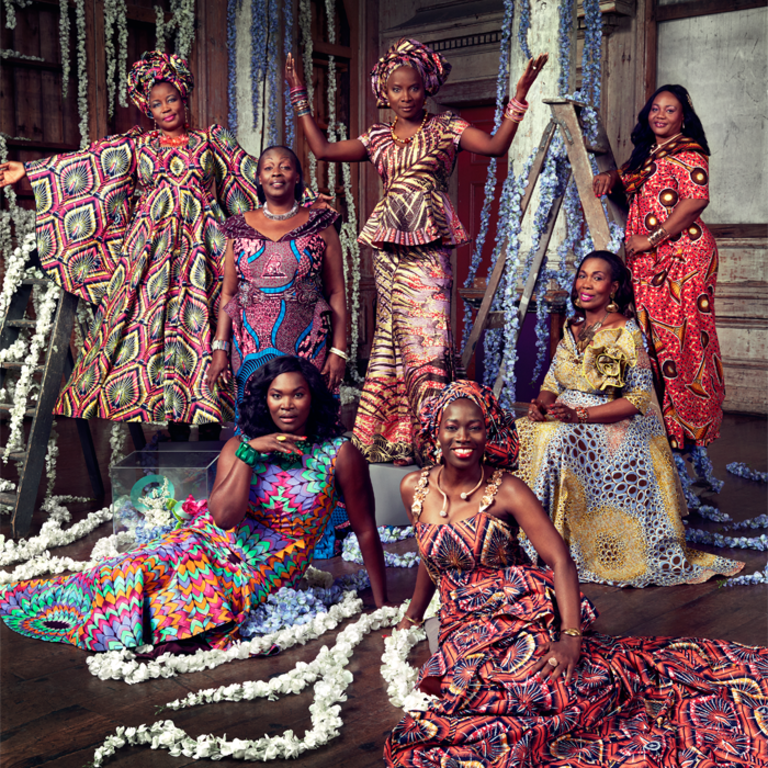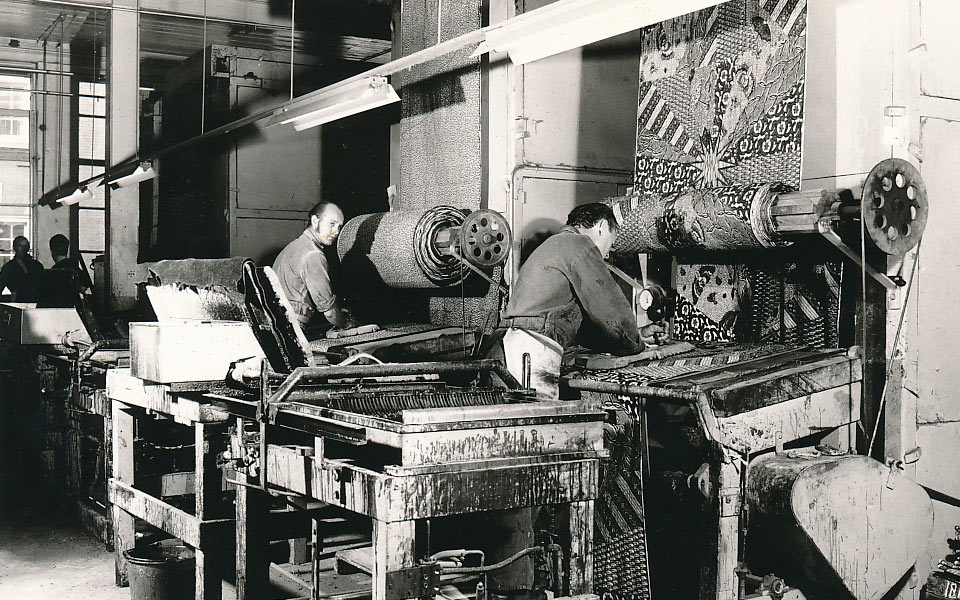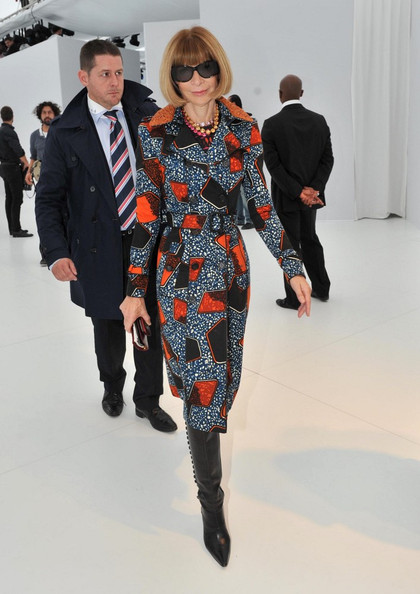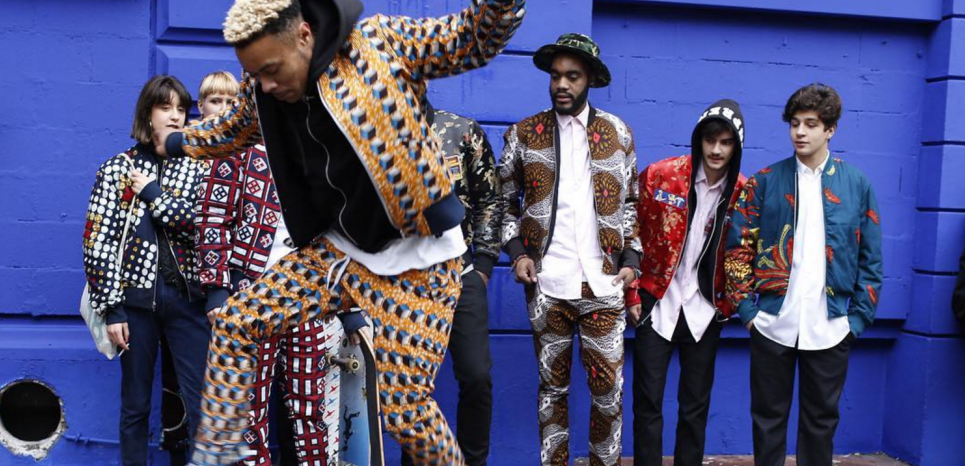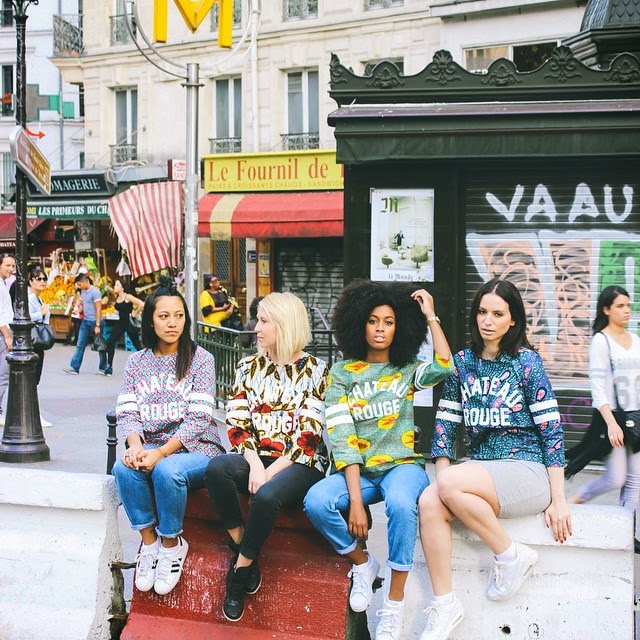Wax Prints of Africa
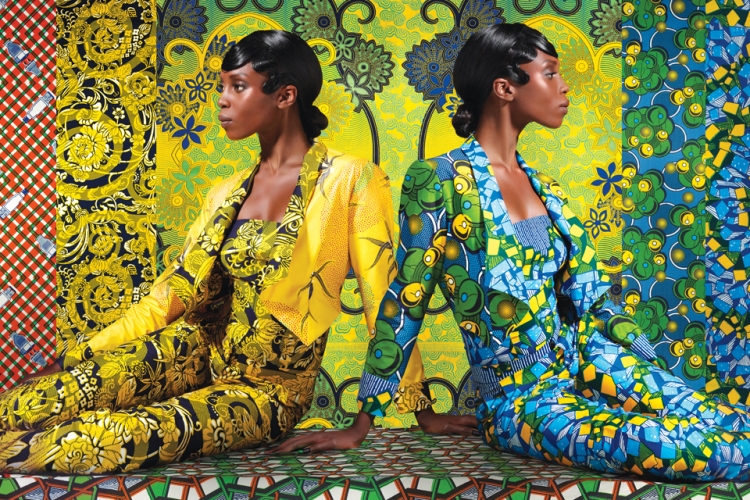
From the markets of Kinshasah to the Fashion Weeks of New York and Milan through the hype shops of Paris, wax prints are everywhere. Wax fabric is a colorful cotton textile very fashionable in sub-Saharan Africa. Treated on both sides with wax, it gives it hydrophobic properties. First imported in the 19th century by the Dutch merchants, the Javanese Wax Print conquered the continent and became a claimed symbol of Africa and a part of its identity.
Image Credit: VliscoEven if its visual is strongly inspired by the sub-Saharan African style, origins of was prints are blurred, the wax fabric can be called "Dutch", "English", "African" or "Chinese". According to LeMonde, the biggest producer is Vlisco: “the real "father of the wax" produces 70 million yards of tissue (about 64 million meters) each year in the Netherlands, and flows to 90% in Africa, for almost 300 million euros In 2014.”
Vlisco in the 1930s | Image Credit: messynessychic.com
Image Credit: messynessychic.com
The Duch origin of wax prints has made the fabric famous internationally. Yet, it still keeps a strong African identiy that inspires many designers including Burberry, David Tale and Stella Jean. Wax has been used for different fashion shows, bringing a breath of novelty to Western fashion.
Image Credit: nothingbutwax.com
In Paris, the place of wax is well anchored in the fashion market and transmits a strong message: fair-trade and diversity. African fashion has a great influence in the Parisian fashion and these colorful fabrics are used for the cuts of everyday clothing. The brand Atelier Beaurepaire has started the trend with a full collection of wax pants and jackets with abstract prints. Located between the Canal Saint Martin and Place de la République, the brands target a young trendy population that mixes codes and styles.
In the 18th arrondissement, the brand Maison Château Rouge also plays with codes and cultures. According to the brand itself “the brand symbolizes the encounter of several cultures. A bold mix between the loincloth, the ultimate piece of traditional African women's wardrobe, and a more urban style.” More than that, the project has first been created to to participate in a collaborative way in the development of VSEs and SMEs in Africa.
Colors, sharing and diversity… what else?

